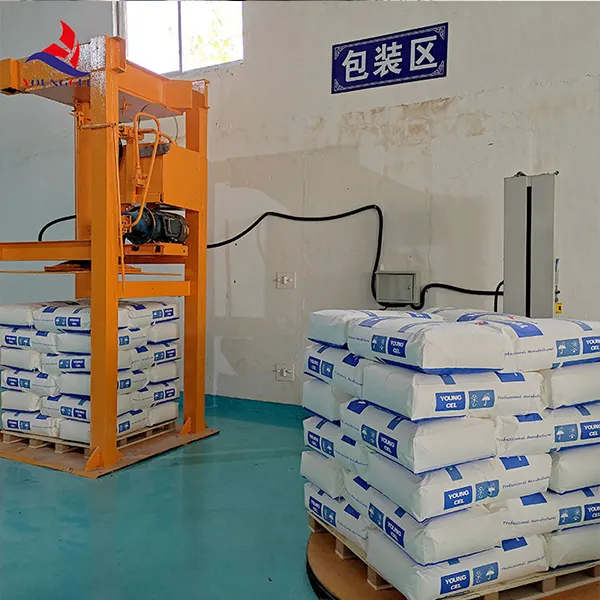HPMC Manufacturing Plant A Cornerstone of Modern Industries
Hydroxypropyl Methylcellulose (HPMC) is a versatile and widely used chemical compound in various industries, including pharmaceuticals, construction, and food. HPMC is a cellulose derivative, known for its thickening, emulsifying, and film-forming properties. As the demand for HPMC continues to grow, establishing efficient and innovative manufacturing plants has become increasingly important. This article will explore the significance of HPMC manufacturing plants, the processes involved, and their impact on various sectors.
Importance of HPMC
HPMC is integral to multiple applications due to its unique characteristics. In the pharmaceutical industry, it serves as a critical excipient in tablet formulations, enhancing drug solubility and stability. In the construction sector, HPMC is used in cement formulations, providing improved workability and water retention in mortars and plasters. Moreover, in the food industry, it acts as a thickener and stabilizer, contributing to the texture and consistency of various products. Its non-toxic nature and biodegradability further enhance its desirability across these sectors.
The Manufacturing Process
The manufacturing of HPMC typically involves several key steps sourcing raw materials, chemical synthesis, and quality control. The primary raw material for HPMC production is cellulose, often sourced from natural sources like wood pulp. The cellulose is chemically modified through a process that involves etherification with propylene oxide and methyl chloride. This transformation results in a product that exhibits hydroxypropyl and methyl groups, which are responsible for HPMC’s desired properties.
1. Raw Material Preparation The process begins with the selection and preparation of high-purity cellulose. The cellulose is then processed into a fine powder to ensure even reaction with the chemicals used in the synthesis stage.
2. Etherification Process The powdered cellulose is treated with propylene oxide and methyl chloride under controlled conditions. This reaction alters the structure of cellulose, introducing hydroxypropyl and methyl groups. The extent of this modification can be adjusted depending on the desired characteristics of the final product.
hpmc manufacturing plant

3. Purification After the etherification reaction, the product is thoroughly washed and purified to remove any unreacted chemicals or by-products. This step is crucial to ensure the safety and efficacy of HPMC for its intended applications.
4. Drying and Milling The purified HPMC is then dried to remove moisture content. Following drying, it is milled into the required particle size to facilitate easy integration into formulations in various industries.
Quality Control
Quality control is a vital aspect of HPMC manufacturing. Each batch is subject to rigorous testing to meet industry standards. Parameters such as viscosity, gelation properties, and solubility are meticulously evaluated. Utilizing advanced analytical techniques ensures that the HPMC produced is consistent and reliable. Additionally, many manufacturers obtain certifications like ISO to demonstrate their commitment to quality and safety.
Impact on Industries
HPMC manufacturing plants play a pivotal role in meeting the growing demand for this essential compound. As industries evolve towards sustainability and efficiency, the application of HPMC is likely to expand. In pharmaceuticals, HPMC's role in developing advanced drug delivery systems is becoming increasingly prominent. In construction, the formulation of high-performance building materials incorporating HPMC enhances durability and functionality. Meanwhile, the food industry benefits from the improved texture of food products without compromising nutritional value.
Conclusion
The establishment and operation of HPMC manufacturing plants are crucial for supporting various industries that rely on this versatile compound. The combination of advanced manufacturing processes, stringent quality control measures, and the ever-growing demand for HPMC underscores its significance in modern applications. As innovations continue and industries strive for more sustainable solutions, the role of HPMC and its manufacturing processes will undoubtedly evolve, contributing to advancements across multiple sectors. The future of HPMC manufacturing not only holds promise for economic growth but also for the continuous improvement of product quality and sustainability in the industrial landscape.
-
The Application and Significance of Construction RdpNewsMay.19,2025
-
Industrial Grade HpmcNewsMay.19,2025
-
Building Coating Adhesive Building Coating Adhesive HpmcNewsMay.19,2025
-
Application Of Hpmc For Detergent For Detergent In DetergentsNewsMay.19,2025
-
Application Of Hpmc Cellulose In Cement-Based MaterialsNewsMay.19,2025
-
Application Of High Quality Hpmc For Construction In The Field Of ConstructionNewsMay.19,2025




